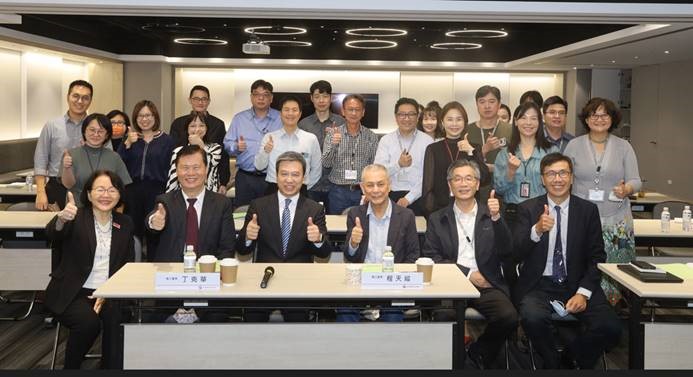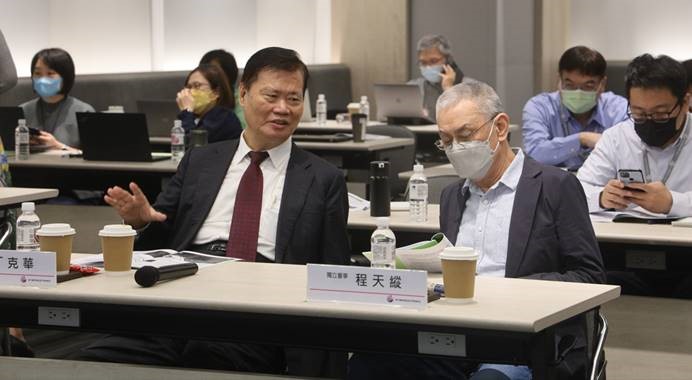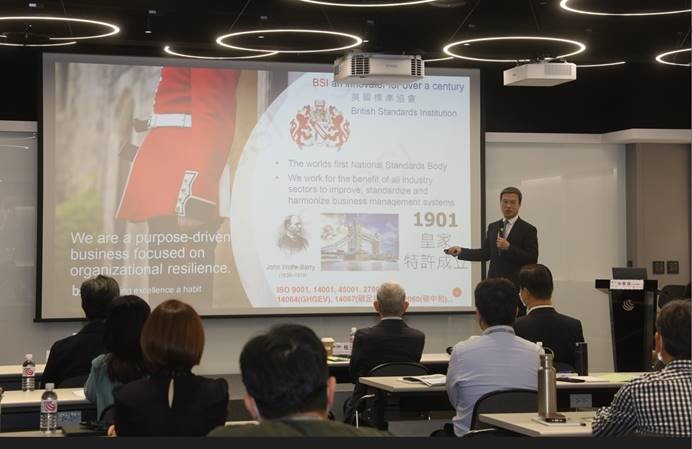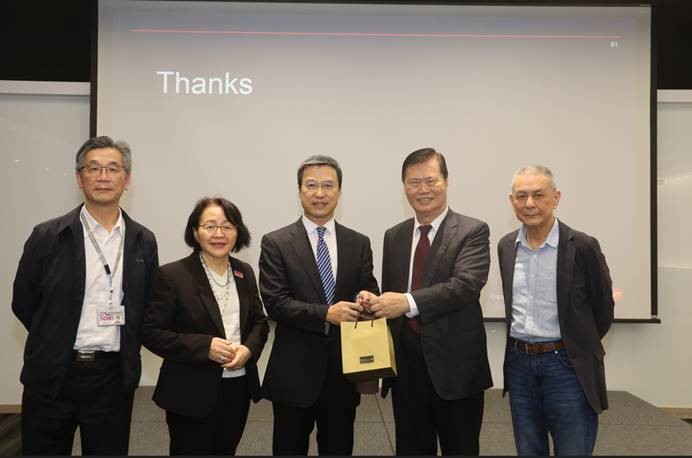Analyzing the sustainable challenges and opportunities of global enterprises through Taiwan’s underlying developmental concerns
How will Taiwan attain net zero by 2050? This is a key issue that all TWSE/TPEx listed companies in Taiwan are facing in order to fulfill the sustainable development responsibilities borne by their board of directors. As the deadline approaches and exponential amounts of information are generated, the National Development Council announced at the end of March in 2022 transitional strategic paths encompassing the four major directions of energy, industry, lifestyle, and society. Meanwhile, the Financial Supervisory Commission is also aggressively tackling environmental issues through financial means, launching the “Green Finance Action Plan” to drive the financial industry’s exertion of financial influence.
Managing Director Peter Pu of BSI NE Asia Region, a third-party independent certification unit, points out that the obstacles to attaining net-zero emissions globally by 2050 can only be overcome by building carbon-footprint awareness in the daily life of all global citizens. Examples include awareness of the carbon emissions that have gone into the making of the bottle of mineral water before you, and the temperature settings of the water heaters and air conditioners of your home, etc.
An overview of several important risk indicators from multiple countries shows that the failure of climate actions to take effect despite indisputable extreme climate conditions has already revealed to us the risks that are mostly likely to arise going forward. Meanwhile, the three major milestones regarding the global climate pledge are as follows: (1) The “Paris Agreement” of 2015, an international treaty on climate change with as many as 195 signatories across the globe; (2) The UN IPCC’s “Special Report on Global Warming of 1.5 °C,” which predicts a dramatic rise in natural disasters induced by global warming due to human activities including drought, wildfire, flood and famine among other calamities of life and death if action to limit warming is not taken well before 2030; (3) The goal of 2050 Net Zero, which involves transformations to international competitiveness and driving force as we know it, changes to existing rules, the establishment of new business forms, and the complete restructuring of industry supply chains and value chains.
From an industry perspective, the transitions needed to achieve net zero and carbon neutrality include carbon reduction in the steel, cement and chemical engineering industries in the industrial sector; renewable energy, distributed generation, energy storage and smart grids in the power sector; new energy vehicles, hydrogen fuel cells, methanol and biofuel as well as the Internet of Vehicles in the transportation sector; plant proteins, biogas, sustainable palm oil and sustainable food production in the agriculture sector; advancements in green architecture including energy efficiency improvements, hybrid architecture and HVAC in the building sector; and carbon negative related technologies such as forest carbon sinks, carbon capture and storage, and the exploration of new materials such as graphene that can redirect our society toward the goal of net zero emissions.
The organizational resilience so vital to corporate sustainable development refers to the ability to recover rapidly from difficulties, while a resilient enterprise refers to an organization that is not only able to predict, respond to and adapt to changes in the environment in order to survive but moreover thrive in adverse conditions. The average lifespan of global enterprises is currently 15 years, whereas small and medium enterprises in Taiwan are only able to keep afloat for an average of 7 years. In 2022, the top three among 16 organizational resilience indicators in terms of importance are innovation, corporate culture, and training.
The British Standards Institution published the first-ever international standard for carbon neutrality, PAS 2060, on April 20, 2010, offering a globally common definition, certification standard and framework for the declaration of carbon neutral status. Steps to be taken include the following: STEP 1. Selecting the subject and scope of the carbon neutrality claim → STEP 2. Making an inventory of the carbon footprint associated (direct and indirect total GHG emissions) → STEP 3. Writing a Carbon Footprint Management Plan (CFM-Plan) → STEP 4. Validate and declare the achievement of carbon neutrality → STEP 5. Execute greenhouse gas (GHG) reduction → STEP 6. Engage in carbon offsets through certified carbon credits in which 1 carbon credit usually equals one metric ton of carbon dioxide equivalent gases and is used to quantify carbon offsets → STEP 7. Validate the achievement of the declaration → STEP 8. Achievement of carbon neutrality.
Are carbon rights a viable business? As enterprises recognize and respond to sustainable issues and business opportunities arise, US corporation Tesla generated a historically high surplus of 438 million US dollars in the first quarter of 2021 while sales of carbon rights reached 518 million US dollars, meaning the company earned greater profits from carbon rights trading than its main business of the production and sales of electric vehicles. The Department of Environmental Protection, Taipei City Government and Taipei 101 jointly engaged in replacing the lighting fixtures in the 101 parking garage, thus completing Taiwan’s first ever “residential/commercial micro-scale offset project” in which 184 metric tons of CO2e were certified. Carrefour Chong Qing Store, under the guidance of the Department of Environmental Protection, also registered for offset projects offered by the Environmental Protection Administration (EPA). The carbon reduction efforts made by these two entities alone is estimated to reach 4,028 metric tons over a span of 10 years with Taipei City Government obtaining 50% of carbon rights.
Livestock farms breeding hogs are also shifting from previous practices of using farming waste to fertilize agricultural land by producing biogas, thereby effectively eliminating issues such as bad odors and wastewater damage on arable land as well as achieving green ecocycling. By completing a biogas power generation system and building Taiwan’s first vertical thermal tank using anaerobic fermentation technology to transform farming waste into thermal energy and electric energy, the system is able to produce green energy for use by 80 households, reduce CO2 emissions by 3,700 tons per year, and apply for carbon rights.
Starting in 2015, the UN began actively integrating and connecting the 17 Sustainable Development Goals (SDGs) and 169 targets into its agenda in hopes that global sustainability is able to fulfill contemporary needs and have less impact on the sustainable opportunities of future generations




